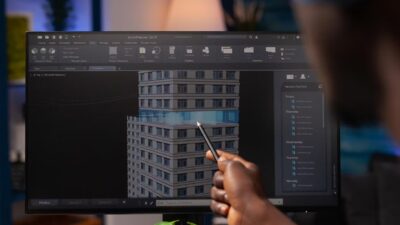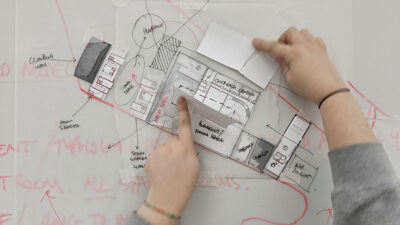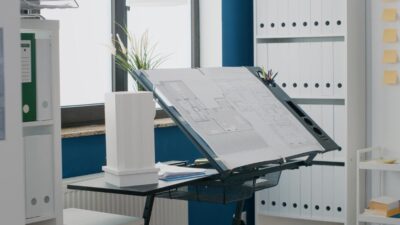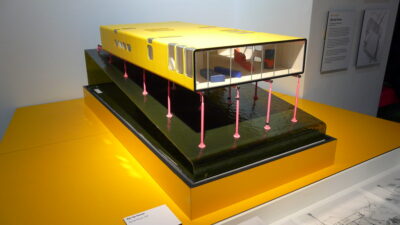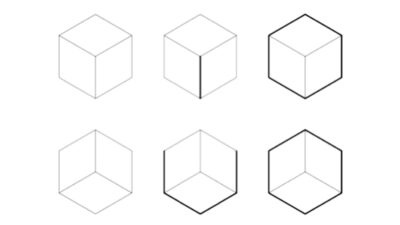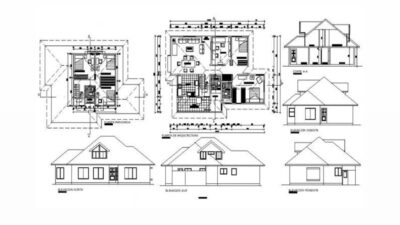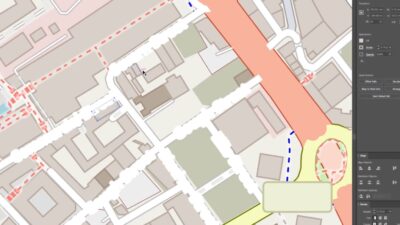Architectural photography stands as a vital and dynamic field within the realm of photography, demanding an understanding of various professional aspects. This comprehensive guide is designed to assist enthusiasts in beginning their journey into this fascinating discipline. As you delve into the world of epic shots in architecture, your ultimate guide, it becomes clear that beginners must start with the right software.
The inspiring architectural marvels of Hampi in South India serve as a perfect example of the depth and beauty that this genre of photography can uncover. Hampi’s intricate designs and rich cultural history have been captured in numerous photographs and stories available online. Such images showcase the power of photography to evoke a spectrum of emotions and highlight the importance of capturing a moment in a single frame. Good photography is about bringing a subject to life, where some images resonate deeply while others may not stir as much emotion. The quality of a photograph is key, and while high-end equipment can enhance a photo, it’s the photographer’s talent that truly makes a difference.
This article aims to provide insights and tips for both professional and amateur photographers. It emphasizes that even those new to the field can produce captivating work that garners attention online. The guide offers a step-by-step approach, drawing from various resources including videos, books, and personal experimentation, to help readers master the art of architectural photography.
The Intersection of Architecture and Photography
Architecture and photography, two distinct yet interconnected realms, together define the essence of architectural photography. This article delves into the individual concepts of architecture and photography, and how their synergy creates this unique photographic genre.
Architecture, derived from words meaning “chief” and “builder,” encompasses structures that serve as shelters and fulfill various functional needs. It’s not just about creating spaces for living; good architecture addresses challenges for individuals and the broader environment, offering solutions through design and innovation.
Photography, on the other hand, is the art of capturing light to depict objects, places, and people. It transcends mere visual representation, enabling us to see and interpret the world in ways beyond our usual perception. Consider the impact of visual elements in our daily lives, such as the images in newspapers or online articles. These images enhance our understanding and connection to the content, demonstrating that photography is much more than a simple record of events; it’s a powerful medium for storytelling and emotional engagement.
Understanding the origins and evolution of photography further enriches our appreciation of this art form. The following section will explore the beginnings of photography, setting the stage for its convergence with architecture.
The Origins of Photography
Understanding the origins of photography is crucial for anyone interested in the field, as it lays the foundation for comprehending its evolution and significance. This brief overview aims to highlight the key milestones in the development of photography without delving too deeply into technical details.
The journey of photography began in the 1820s with Nicephore Niepce, who created what is considered the first surviving photograph. Niepce’s experiment involved several hours of exposure to capture a view from his window. This breakthrough combined the principles of light-sensitive materials and the camera obscura, a concept known long before Niepce’s time. Interestingly, this first photograph also inadvertently became the first architectural photograph, despite its primary focus being more practical than aesthetic.
This milestone in the history of photography not only signifies the inception of a new art form but also marks the beginning of architectural photography. With this concise history, you can appreciate the roots of photography and its impact on how we capture and perceive the world around us.
Different Styles of Architectural Photography
Architectural photography, much like architecture itself, presents a diverse array of styles and purposes. This section introduces various forms of architectural photography, each with its unique approach and objective.
- Documentary Architectural Photography: This style focuses on accurately representing architectural plans, designs, and details. It’s commonly used in architectural books, magazines, and construction documents, where clarity and precision are paramount;
- Postcard Photography: Aimed at capturing iconic views for souvenirs, postcard photography often features vibrant colors and scenic compositions. These images are designed to evoke a sense of place and are typically geared towards tourists;
- Vacation Photography: This informal style encompasses the photographs taken by travelers and tourists to capture memories of their visits. It’s characterized by its spontaneous and personal nature, without stringent technical considerations;
- Advertising Photography: In this genre, architectural elements are used to enhance the appeal of products or services in advertisements. It often involves sophisticated techniques like blending, artificial lighting, and color enhancement to create visually striking images;
- Artistic Architecture Photography: Found in galleries and art exhibitions, this style uses architectural subjects to convey artistic themes or expressions. Here, the focus shifts from the architectural design to the photographer’s creative vision and interpretation.
Each of these styles contributes to the rich tapestry of architectural photography, offering different lenses through which we can appreciate the built environment. Next, we’ll delve into the tools of the trade, focusing on the cameras used in architectural photography.
Choosing the Right Camera for Architectural Photography
In the realm of architectural photography, while skill and creativity are paramount, the choice of camera does play a significant role. Contrary to popular belief, a high-end camera is not always essential for capturing stunning architectural images. Often, the photographer’s ability to evoke emotions and capture perspectives can triumph over technical limitations. Even images with some technical flaws can possess a unique charm and convey a story effectively.
However, understanding camera options is still important for architectural photographers. This article focuses on suitable camera types while bypassing digital compact and bridge cameras, which generally don’t meet the specific needs of architectural photography.
Key camera types for architectural photography include Micro Four Thirds, APS-C, and DX-DSLRs. These cameras often have sensors smaller than the traditional 35mm film format, making them more affordable. The Four Thirds system, for instance, has a sensor size half that of a 35mm film frame and a 2x focal length multiplier. This factor is crucial in determining the angle of view a lens will provide relative to a 35mm frame. For example, a 14mm lens on a Four Thirds camera equates to a 28mm lens on a full-frame camera.
Mirrorless cameras, particularly those following the Micro Four Thirds standard, eliminate the mirror box of traditional DSLRs, offering compactness and high-quality imaging. These cameras are excellent for hobbyists or those on a budget, as they provide substantial pixels and capture more light, yielding higher resolution and dynamic range.
For those seeking top-tier quality, full-frame cameras by brands like Canon, Sony, and Nikon are desirable. They mimic the sensor size of traditional 35mm film cameras. While they can be more expensive, especially when paired with high-quality lenses, they offer exceptional image quality and minimal vignetting.
A practical tip for those with budget constraints is to invest in a high-quality lens paired with a less expensive camera body. This approach often yields better results than investing in a high-end camera with subpar lenses. Ultimately, the best camera for architectural photography depends on your specific needs, budget, and the level of quality you’re aiming to achieve.
There’s no one-size-fits-all camera for architectural photography, each having strengths and weaknesses. Digital compacts and bridge cameras are less suitable for beginners in this field. DSLRs, especially with quality lenses, are practical for small budgets, while mirrorless cameras offer portability. For professional building photography, full-frame digital cameras with good lenses are recommended. Choose based on your preferences. Below are suggestions in each category for a broader understanding of the best cameras for architectural photography.
| Camera Type | Recommendation |
|---|---|
| DSLRs | Canon EOS Rebel SL3, Nikon D5600, Pentax K-3 III |
| Full Frame Architecture Photography Camera | Sony A7 IV, Canon EOS R5, Nikon Z9 |
| Mirrorless Architecture Photography Camera | Fujifilm X-H2, Olympus OM-D E-M10 MARK IV |
Selecting the Ideal Lenses for Architectural Photography
Understanding the importance of lenses in architectural photography is crucial, as they significantly influence the quality of the images. While choosing the right camera is essential, investing in good lenses is even more critical. Lenses impact various aspects of a photograph, including angle of view, sharpness, and depth of field. Whether you opt for a budget-friendly camera or a high-end model, knowledge about the right lenses is vital.
In architectural photography, lenses need to provide accurate reproduction with minimal lens errors and a suitable angle of view. Given the large size of architectural subjects and the wide angles required, selective focus is less critical in this genre. Architectural photographers aim to capture the entire structure in sharp detail, often shooting with the lens aperture narrowed down to reduce vignetting and other image quality issues.
Tilt/shift lenses are particularly beneficial for architectural photography. They allow for physical adjustments in the lens, offering greater flexibility in viewpoint and framing, which is crucial for capturing structures accurately. These lenses enable photographers to correct perspective distortions and maintain parallel lines in the architecture, resulting in more true-to-life images.
The difference in image quality between photographs taken with a tilt/shift lens and a standard architectural photography lens is noteworthy. For instance, a comparison of images by photographers Chris Crumley and Chuck Guthrie demonstrates this distinction. The image taken with a tilt/shift lens shows corrected perspective and less distortion compared to the one taken with a regular lens.
Therefore, investing in high-quality lenses, especially tilt/shift lenses, is advisable for those serious about architectural photography. While they may be more expensive, the superior optical quality and the ability to make precise adjustments justify the cost.
Top Picks for Lenses in Architectural Photography
When it comes to selecting the best lenses for architectural photography, there are several outstanding choices that stand out for their quality and performance. Notable options include the Canon 16-35mm f4L IS Lens, renowned for its wide-angle capabilities and image stabilization. The Canon TS-E 90mm f/2.8 is another excellent choice, offering tilt and shift functions that are essential for correcting perspective in architectural images.
For Nikon users, the PC NIKKOR 19mm f/4E ED is a superb lens, providing a wide field of view with exceptional edge-to-edge sharpness, crucial for capturing detailed architectural scenes. Additionally, the PC-E NIKKOR 24mm f/3.5D ED is a versatile choice, known for its precise control over perspective and depth of field.
These lenses are highly regarded in the field of architectural photography for their ability to deliver sharp, distortion-free images with accurate color rendition, making them ideal for capturing the intricate details and grandeur of architectural subjects. Whether you’re shooting expansive exteriors or detailed interiors, these lenses can help you achieve professional-quality results.
Best Camera-Lens Combos for Architectural Photographers
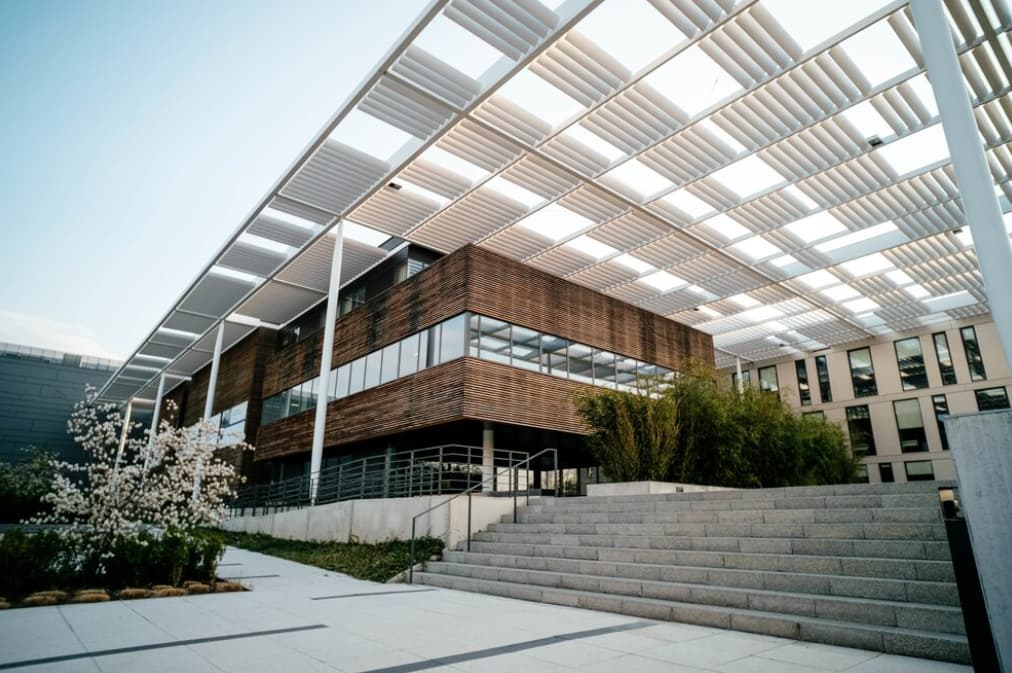
Navigating the vast array of cameras and lenses available for architectural photography can be daunting. To simplify this, here are recommended combinations tailored to various skill levels and needs, from beginners to advanced professionals.
- For Beginners: As a newcomer to architectural photography, starting with an entry-level DSLR or mirrorless camera paired with a kit lens is a practical choice. This setup allows you to learn and experiment without a significant initial investment. A recommended camera for beginners is the Nikon D5600, which offers great value and performance for its price;
- For Hobbyists: Those with a growing passion for architectural photography and some experience might consider investing in a better-quality DSLR and an ultra-wide-angle zoom lens. This combination enhances your ability to capture diverse architectural scenes. For lenses, the Nikon AF-P DX 10-20mm f/4.5-5.6G VR and the Nikon Z 14-30mm f/4 S are excellent choices that offer versatility and quality;
- For Intermediate Photographers: If you’re an intermediate photographer looking to delve deeper into architectural photography, consider upgrading to a full-frame DSLR. Pairing it with high-quality zoom or tilt/shift lenses will significantly enhance your image quality. Recommended models include those mentioned in the DSLR and lens sections previously. This level encourages exploration and customization of equipment to suit individual shooting styles and preferences;
- For Advanced Professionals: Advanced professionals likely have a clear understanding of their needs and preferences. The best equipment for this level includes top-tier full-frame cameras coupled with high-end wide-angle or tilt/shift lenses. While these setups can be expensive, they offer unmatched quality and flexibility, crucial for professional work. At this level, the focus is on fine-tuning equipment choices to achieve the highest standards of architectural photography.
Each level reflects a progression in skills and investment, with equipment choices evolving to meet the growing demands and expertise of the photographer.
Essential Accessories for Architectural Photography
For those delving into the world of architectural photography, having the right camera and lenses is just part of the equation. Equally important is a comprehensive kit of photography accessories, each serving a specific purpose to enhance your shooting experience. Here is a detailed guide on the essential accessories for architectural photography:
- Tripod: Essential for stabilizing your camera, a tripod ensures sharp, shake-free images. It’s important to choose a tripod that is stable and can support the weight of your camera and lens. Budget-friendly options are available from Manfrotto, while Berlebach and Gitzo offer higher-end alternatives;
- Tripod Head: Available separately from the tripod, tripod heads allow for precise camera positioning and are indispensable for achieving the perfect shot. Avoid low-quality heads as they can negatively impact your photography. Top brands include Markins, Linhof, and Arca Swiss;
- L-Bracket and Panorama Head: For photographers who frequently shoot in portrait orientation, an L-Bracket is a must-have. It allows for an easy switch between landscape and portrait formats without altering the camera’s balance. These brackets are available in both generic and custom models for different camera types;
- Lens Hood: A lens hood is crucial to prevent stray light from entering the lens, which can cause vignetting and distort image quality. While they add extra cost, lens hoods are vital for protecting your lenses and maintaining image integrity;
- Filters: Beyond digital enhancement, physical lens filters like Polarizers, Graduated filters, and Neutral Density filters are critical. Polarizers reduce reflections and enhance the sky’s color, with circular polarizers being a popular choice. Graduated filters, mounted on a holder, help balance exposure in high-contrast scenes. Neutral Density filters decrease the amount of light entering the lens, allowing more control over exposure. Quality brands include B+W, Hoya, Heliopan, LEE Filters, and Haida;
- Lens Adapters: Lens adapters enable the use of various lenses, including vintage ones, with modern DSLR bodies. They are especially useful for photographers looking to combine classic lenses with contemporary camera technology. However, compatibility varies due to the flange focal distance – the gap between the lens mount and the sensor. For instance, DSLRs with a large flange focal distance may not work well with lenses designed for a shorter distance. Canon EOS cameras are known for their adaptability due to their short flange focal distance and wide bayonet opening. As noted by photographer Adrian Schulz, special adapters can overcome focus limitations, but they may affect image quality.
In addition to these, other critical accessories include memory cards, extra batteries, a flash unit, rain covers, and cleaning tools like blowers and brushes. While some of these accessories may seem superfluous at first, they can become indispensable in various shooting scenarios. For easy future reference, consider bookmarking this guide to ensure you’re always prepared with the right tools for your architectural photography ventures.
The Essence of Exceptional Architectural Photography
Now that you’ve become acquainted with accessories and camera kits, it’s time to explore the art of photography itself. What, in your opinion, defines a flawless architectural photograph? How can you assess its quality? If your mind is overflowing with thoughts and distractions, take a moment to relax and reflect on your previous photographic endeavors. If clarity still eludes you, consider comparing your work to the finest images you discover online. And don’t worry, even if you’re grappling with a barrage of ideas and running low on insights, I’ll provide guidance.
An impeccable architectural photograph serves as a conduit for conveying a message in a comprehensible form of expression. It also entails presenting essential elements in a manner that instantly resonates with the viewer. Even if the viewer possesses no prior knowledge of the structure in question, they should establish a sense of connection and understanding with it.
A Concise Guide to Architectural Photography
Capturing stunning architecture photographs doesn’t come with a one-size-fits-all guide, nor does it happen overnight. It’s a skill honed through time and practice. However, you can follow a comprehensive approach that will lead you to create photographic masterpieces. Allow me to unveil this approach to you.
The initial step in your architectural photography journey is situational analysis, which follows the selection of your subject. So, how do you go about it? It’s a matter of answering a few crucial questions.
- Familiarize yourself with your surroundings, encompassing considerations like weather conditions and the positioning of sunlight. This knowledge will help you understand the play of shadows and backlight;
- Take a moment to inspect your chosen location for any troublesome reflections that might detract from your shot;
- Consider your approach to portraying the building: Will you adopt an artistic style, or are you aiming for a documentary feel?
- Select the camera angle that best accentuates the building’s distinctive features;
- Decide on the orientation of your shot: Portrait or landscape?;
- Determine the optimal camera position for capturing the perfect frame;
- Consider any additional elements you wish to incorporate into your composition.
Once you’ve addressed these fundamental questions, the final step is the meticulous selection of the right lens, accessories, and camera settings. Here’s a quick tip: Be attuned to the perfect moment to release your shutter, capturing people, cars, or intriguing shadows that add depth to your composition.
In your quest to become a skilled architectural photographer, this comprehensive approach will serve as your invaluable guide, leading you to create photographs that captivate and inspire.
Guide to Interior Architecture Photography
Interior architecture photography is a captivating realm that offers a unique set of challenges and creative opportunities. While we will delve deeper into advanced topics like shooting techniques and camera settings in upcoming articles, this comprehensive guide will lay the foundation for your journey into capturing the essence of interior spaces.
It’s important to recognize that interior architecture photography differs significantly from its exterior counterpart. In the confines of interior spaces, photographers are faced with limited mobility, making it impossible to convey information about a building’s size and shape. Instead, the focus shifts to the volume, sequence, and interplay of elements within the room.
- One advantage of interior photography is the absence of exterior fixtures and fittings that can impact the mood of an image. Even a single misplaced plant, everyday object, or unnecessary piece of furniture can disrupt the overall aesthetic. Therefore, it’s crucial to remove any items that do not contribute positively to showcasing the room in the best possible light;
- Begin your interior architecture photography journey by meticulously cleaning polished surfaces and eliminating any smudges. Arrange the room in a manner that aligns with the overall theme, ensuring that no element contradicts the established ambiance. Address imperfections manually to reduce the need for digital retouching;
- Another critical aspect to consider is the arrangement of elements within the room. You have the choice of adhering to conventional photography rules or deliberately disrupting them to draw attention. However, clarity in communication is paramount. Ensure that your composition establishes a meaningful connection between objects and fittings within the space. If an arrangement fails to convey a message or evoke a response, it may not achieve its desired impact;
- Lastly, delve into the nuances of perspective and standpoint. Understanding how to choose the right angle and viewpoint can dramatically influence the visual storytelling of your interior architecture photographs.
Perspective in Architectural Photography
Achieving the best and most realistic-looking architectural images hinges on your understanding of perspective. By strategically positioning yourself in relation to the architecture, you can capture striking photographs that convey depth and style. In this guide, we’ll explore the nuances of perspective in interior spaces.
There are two primary types of perspectives to consider: central and two-point, each serving a distinct purpose when shooting interiors.
In smaller rooms, a central perspective is often the go-to choice. Here, position your camera along the central axis of the room and shoot in the direction of the far wall. It’s worth noting that the larger the room, the greater the distance between the camera and the far wall.
For a two-point perspective, opt to shoot diagonally into the space. This approach adds a sense of style and depth to your photographs. However, in narrow spaces, it can create an intense and dramatic effect, so it’s typically more suited to expansive areas.
Select your standpoint carefully, considering the direction of light and the presence of mixed light sources. A quick tip is to shoot at eye level, approximately 6 feet above the floor, to produce a natural-looking interior shot. In rooms with low ceilings, shooting from 3 to 4 feet above the floor can create a more spacious appearance. Be mindful, though, that a low camera position may result in missing certain objects, while a higher position emphasizes the depth of distant elements within the space.
When it comes to camera settings, the principles remain consistent for both exterior and interior architecture photography. As promised, we will delve into these settings in a separate article.
To further enhance your architectural photography skills, consider enrolling in online courses specifically tailored to this discipline. These courses can provide valuable insights and practical knowledge to help you master the art of architectural photography.
Top Architectural Photography Online Courses
Embarking on a journey to learn something new, especially from scratch, often involves experimentation and a certain level of discomfort. While trial and error can be enlightening, isn’t it wiser to invest your time efficiently in structured learning?
Here, we present a curated selection of masterclasses that offer invaluable insights into the art of architectural photography:
- “Immersion in Architectural Photography” by Jesús Granada: Dive deep into the world of architectural photography with this immersive course;
- “Post-Production Techniques for Architectural Photography” by Daniel Arango: Explore advanced post-production techniques to enhance your architectural photography skills;
- “Architectonic and Urban Photography” by Nicanor Garcia: Delve into the intricacies of capturing the essence of architecture and urban environments through photography.
In addition to these courses, there are also some noteworthy books that can provide a wealth of knowledge while offering an enjoyable reading experience:
- “Seeing Ambiguity”;
- “Maynard L. Parker: Modern Photography and the American Dream”;
- “Architectural Photography: Composition, Capture, and Digital Image Processing” by Adrian Schulz.
By immersing yourself in these courses and books, and by experimenting with various techniques and tricks, you can capture remarkable shots and advance your career in architectural photography. However, don’t rush off just yet—we’re about to dive into the exciting world of editing in the final part of our article.
Essential Editing Software Options for Photographers
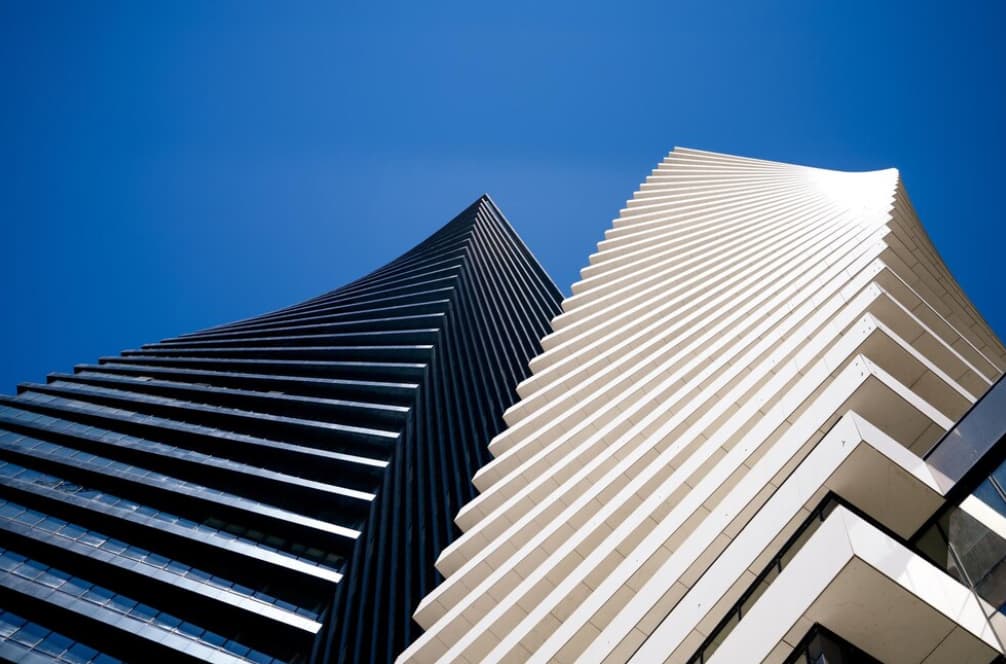
Once you’ve captured great photographs, the next step is to enhance and refine them using compatible editing software. This skill is indispensable for photographers of all levels.
Editing software options tailored to various needs and preferences:
Adobe Photoshop
- Price: Starting at $9.63/month;
- Adobe Photoshop is a robust and versatile editing software widely used by professionals. While it offers a comprehensive range of features, it may take some time for beginners to explore its full potential. However, these features are immensely powerful and can help you achieve remarkable results in your editing endeavors.
Corel Paintshop Pro
- Price: $66.60 (lifetime license);
- Corel Paintshop Pro is an excellent choice for those seeking user-friendly editing software on a budget. Beginners with limited editing knowledge can create stunning images with ease. Please note that Corel Paintshop Pro is not compatible with Mac operating systems.
Photopea
- Price: Free;
- Photopea is an ideal option for budget-conscious beginners. It’s a free editing tool that offers a range of features comparable to premium software. However, it relies on a stable internet connection and may experience occasional lag;
- Whether you’re a seasoned photographer or just starting out, these editing software options cater to a variety of needs and budgets. Investing time in mastering your chosen software will undoubtedly elevate the quality of your photographic work.
Conclusion
You possess an impressive capacity to absorb a wealth of information at once. Currently, the comprehensive details on architectural photography have been provided, with the exception of camera settings and lighting, which will be addressed in the next installment. During this interim period, continue your explorations and do not hesitate to inquire if there are any queries; I will gladly respond to them.


